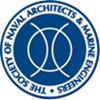采用调谐质量阻尼器缓解张力腿平台动态响应的数值与实验研究
IF 1
4区 工程技术
Q3 ENGINEERING, CIVIL
引用次数: 1
摘要
海上结构物(如张力腿平台(TLP))的响应振幅缓解是重要的,因为这些结构物总是暴露在环境载荷(如波浪)下,在TLP的情况下,平台响应振幅的减小会导致钢筋束中应力范围的减小;这将增加钢筋束的疲劳寿命,从而提高结构安全性。还为机械和船员提供稳定的条件,提高了平台的效率和功能。因此,本文旨在研究将调谐质量阻尼器(TMD)作为一种被动结构控制系统来抑制TLP在波浪载荷下的喘振运动的可能性和有效性。进行了数值和实验研究,以评估TMD的性能。数值模拟结果与实验结果基本一致。本研究中的数值和实验研究结果表明,在海洋中可能出现的波浪范围内,应用调谐到平台涌浪固有频率或接近平台涌浪自然频率的TMD并不能有效降低TLP的涌浪响应。本文章由计算机程序翻译,如有差异,请以英文原文为准。
Numerical and Experimental Study on Dynamic Response Mitigation of Tension Leg Platform Using Tuned Mass Damper
Response amplitude mitigation of the offshore structures like tension leg platform (TLP) is important since these structures are always exposed to environmental loads such as waves, and in the case of TLP, reduction in response amplitude of platform causes reduction in stress range in tendons; this would increase the fatigue life of tendons, and therefore, increases the structural safety. Also providing stable conditions for machinery and crew increases the efficiency and functionality of the platform. This article thus aims to investigate the possibility and effectiveness of applying tuned mass damper (TMD) as a passive structural control system to suppress the surge motion of TLP that is exposed to wave load. Both numerical and experimental studies were carried out to assess the performance of the TMD. A close agreement is obtained between the numerical simulations and experimental results. The results of numerical and experimental investigations in this study indicate that applying the TMD, tuned to the surge natural frequency of the platform or frequencies close to the surge natural frequency of the platform, doesn’t have efficiency in reducing the surge responses of TLP in the range of probable waves in seas and oceans.
求助全文
通过发布文献求助,成功后即可免费获取论文全文。
去求助
来源期刊

Journal of Ship Research
工程技术-工程:海洋
CiteScore
2.80
自引率
0.00%
发文量
12
审稿时长
6 months
期刊介绍:
Original and Timely technical papers addressing problems of shipyard techniques and production of merchant and naval ships appear in this quarterly publication. Since its inception, the Journal of Ship Production and Design (formerly the Journal of Ship Production) has been a forum for peer-reviewed, professionally edited papers from academic and industry sources. As such, it has influenced the worldwide development of ship production engineering as a fully qualified professional discipline. The expanded scope seeks papers in additional areas, specifically ship design, including design for production, plus other marine technology topics, such as ship operations, shipping economic, and safety. Each issue contains a well-rounded selection of technical papers relevant to marine professionals.
 求助内容:
求助内容: 应助结果提醒方式:
应助结果提醒方式:


